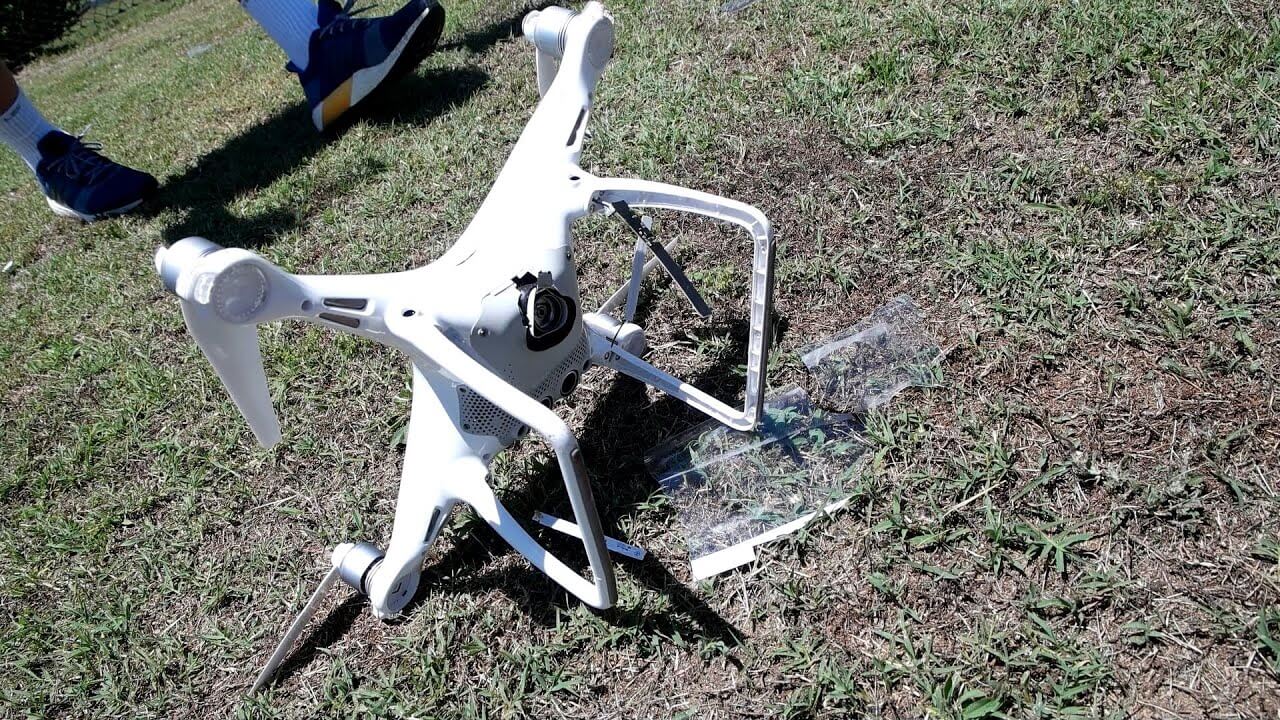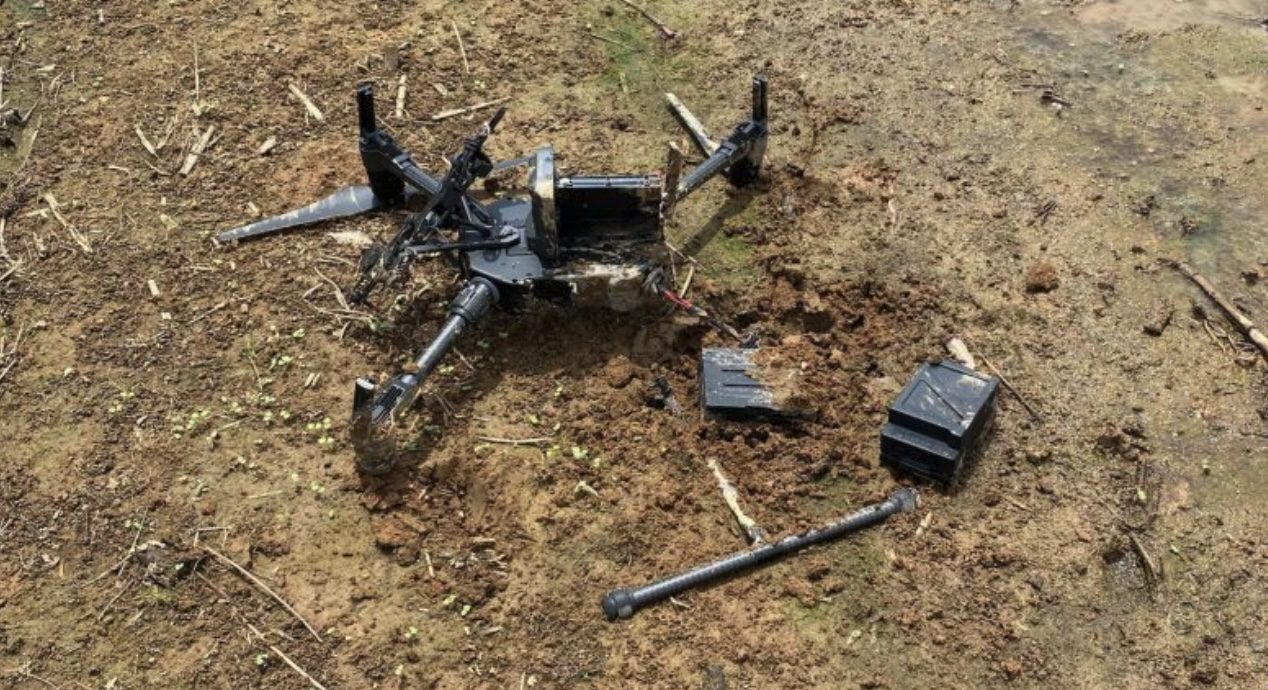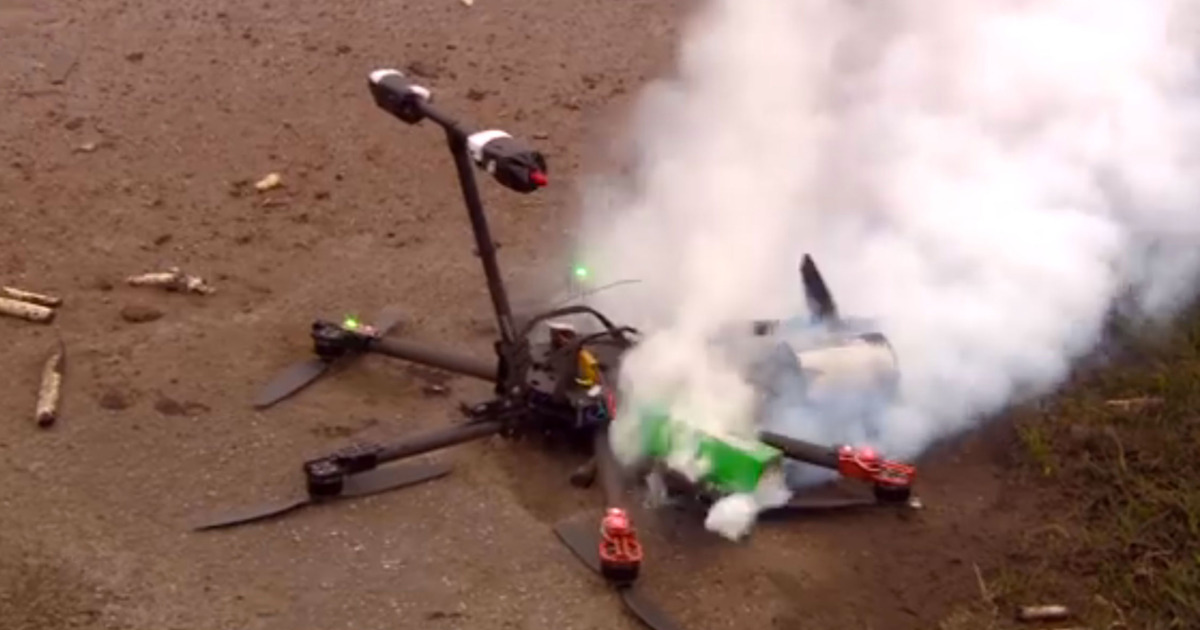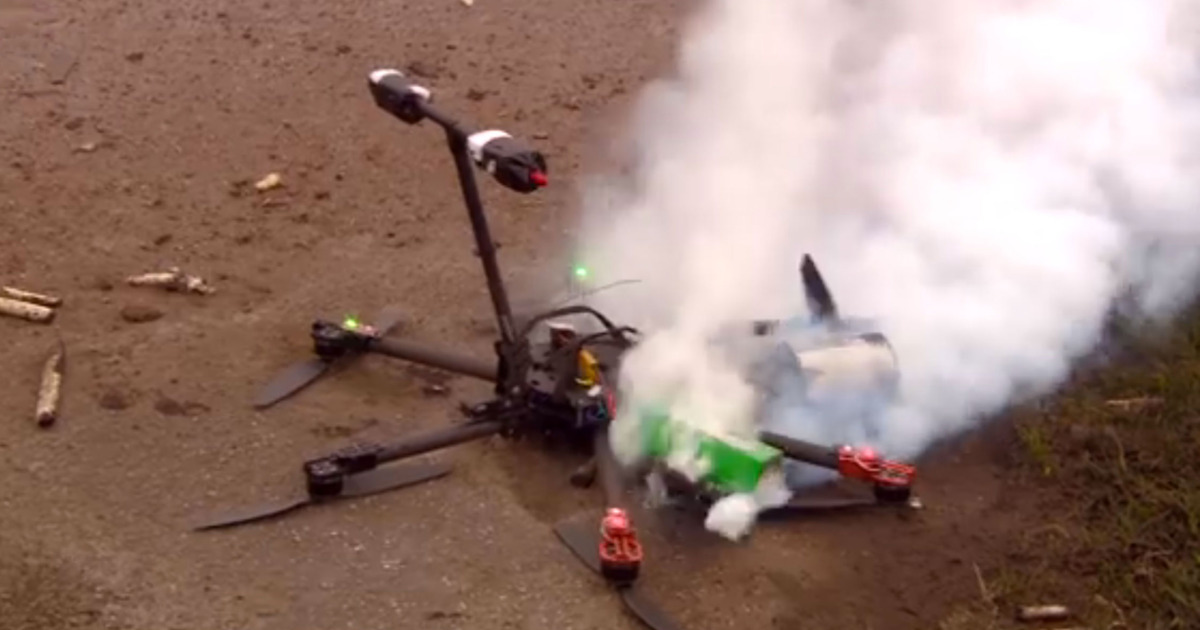Paris drone crash: This unexpected incident throws a spotlight on the complexities of drone technology and urban airspace management. We’ll delve into the specifics of what happened, exploring potential causes ranging from mechanical failures to human error, and examining the incident’s impact on the city and its residents. We’ll also discuss the current regulations surrounding drone operation in Paris and other major cities, and consider how this event might shape future safety measures and technological advancements.
This investigation will cover everything from the drone’s make and model to the immediate aftermath of the crash, including emergency response and any resulting injuries or damages. We’ll analyze the role of weather conditions, software glitches, and human factors in contributing to the accident. Finally, we’ll look ahead to the future of drone technology and what improvements might prevent similar incidents.
Incident Details

The Paris drone crash, while lacking widespread media attention compared to larger-scale incidents, serves as a reminder of the potential risks associated with drone operation in densely populated areas. Understanding the specifics of this event helps highlight crucial safety considerations and regulatory needs. This section details the circumstances, timeline, and known information about the drone and its operator.
The incident involved a drone malfunction resulting in a crash within the city limits of Paris. While precise details about the cause remain somewhat limited in publicly available information, initial reports suggested a possible technical failure or operator error. The incident did not result in any reported injuries or significant property damage, but it prompted a review of local drone regulations and operational safety protocols.
Timeline of Events
Unfortunately, a precise timeline for this specific incident is difficult to ascertain due to limited public reporting. However, a typical timeline for such events might include the following stages: pre-flight checks (including battery status and system diagnostics), flight initiation, malfunction (if applicable), emergency procedures (if attempted), crash, and post-crash investigation (including recovery of the drone and data analysis). The lack of detailed public information prevents a more specific reconstruction.
Drone Specifications and Operator Information
Information regarding the specific make, model, and specifications of the drone involved in the Paris incident is currently unavailable in readily accessible public sources. Similarly, the identity and experience level of the drone operator remain undisclosed. This lack of transparency underscores the need for better data collection and reporting mechanisms following drone incidents.
Summary of Key Details, Paris drone crash
| Date | Time | Location | Drone Model | Operator Information | Initial Reports |
|---|---|---|---|---|---|
| [Date – Unavailable] | [Time – Unavailable] | Paris, France (Specific location unavailable) | [Drone Model – Unavailable] | [Operator Information – Unavailable] | Drone malfunction and crash; no injuries reported. |
Potential Causes: Paris Drone Crash

Determining the exact cause of the Paris drone crash will require a thorough investigation. However, several potential factors could have contributed to the incident, ranging from mechanical issues to human error. It’s crucial to consider all possibilities to prevent similar accidents in the future.
Several interconnected factors could have led to the drone crash. A comprehensive investigation is needed to pinpoint the exact cause, but examining potential mechanical failures, software glitches, weather conditions, and human error is essential.
Mechanical Failures
Mechanical failures in drones, though less common with modern technology, can still occur. These failures can range from simple issues like propeller damage or motor malfunctions to more complex problems involving the drone’s internal components. For example, a cracked propeller blade, even a small one, could cause an imbalance during flight, leading to instability and a subsequent crash. Similarly, a malfunctioning motor could result in a loss of control, especially at higher altitudes or during maneuvers.
A failure in the drone’s frame, perhaps due to a manufacturing defect or previous damage, could also compromise structural integrity.
Software Glitches or Malfunctions
Software plays a crucial role in drone operation. A glitch in the drone’s flight control software, GPS system, or communication link with the controller could easily result in unexpected behavior. For example, a corrupted flight plan could cause the drone to deviate from its intended path and potentially collide with an obstacle. Similarly, a malfunction in the GPS system could lead to navigation errors, causing the drone to lose its orientation and crash.
Furthermore, interference with the communication signal between the drone and controller could lead to a loss of control.
Weather Conditions
Adverse weather conditions can significantly impact drone performance and stability. Strong winds, heavy rain, or even unexpected gusts of wind can overwhelm a drone’s control systems, making it difficult to maintain a stable flight path. For instance, a sudden downdraft could force the drone downwards unexpectedly, while strong crosswinds could push it off course. Fog or heavy rain could also impair visibility, making it difficult for the operator to monitor the drone’s position and react to potential hazards.
Low temperatures can also impact battery performance and the functionality of electronic components.
Human Error
Human error remains a significant factor in many drone accidents. This could include issues like improper pre-flight checks, incorrect flight planning, or simply a lack of pilot skill or experience. For example, an operator might fail to notice a critical warning light or message, or might attempt a maneuver beyond the drone’s capabilities. Poor judgment in selecting a flight location, disregarding weather warnings, or exceeding the drone’s operational limits can all contribute to accidents.
Inadequate training or a lack of awareness of safety regulations can also increase the risk of accidents.
Safety Regulations and Compliance

The Paris drone crash highlights the critical need for robust and consistently enforced drone safety regulations. Understanding the specific regulations in place, comparing them to international standards, and analyzing the operator’s adherence are crucial steps in preventing future incidents. This section will examine the relevant regulations, comparing them to those in other major cities, and assessing the operator’s compliance, ultimately suggesting potential improvements to enhance drone safety.
Relevant Drone Regulations in Paris
Paris, like many major cities, has specific regulations governing drone operation within its airspace. These regulations likely address issues such as flight altitude restrictions, operational zones (no-fly zones near airports, monuments, and crowded areas), required pilot certifications and training, registration requirements for drones, and potentially weight limits. Specific details would need to be sourced from official French aviation authorities, such as the Direction Générale de l’Aviation Civile (DGAC).
These regulations are designed to mitigate risks to public safety and security, and to prevent interference with other air traffic. Failure to comply can result in significant penalties, including fines and legal action.
Comparison with Regulations in Other Major Cities
Regulations governing drone operation vary across major cities globally. New York City, for example, has a comprehensive permitting system for commercial drone operations, with stringent requirements for safety protocols and pilot qualifications. London also has specific no-fly zones and restrictions on drone weight and flight altitude. Comparing Paris’ regulations with those of New York, London, or other cities like Tokyo or Hong Kong, reveals similarities and differences in approach.
Some cities might emphasize pilot training more, while others may focus on strict geographical limitations. This comparative analysis can highlight best practices and identify areas where Paris’ regulations could be strengthened or streamlined.
Operator Adherence to Safety Guidelines
Determining whether the operator adhered to existing safety guidelines requires a thorough investigation into the incident. This would involve examining flight logs (if available), witness testimonies, and any recovered drone data to reconstruct the flight path and operational parameters. The investigation would need to ascertain if the operator held the necessary certifications, if the drone was registered correctly, and if the flight was conducted within permitted airspace and adhered to altitude and speed restrictions.
Failure to comply with any of these regulations would indicate a breach of safety guidelines.
Potential Improvements to Drone Safety Regulations
The Paris drone crash, and similar incidents globally, highlight areas where improvements to drone safety regulations are needed. This might include: more stringent pilot training and certification requirements, improved drone registration and tracking systems (potentially involving technology like geofencing), clearer and more easily accessible information for drone operators, and stricter enforcement of existing regulations. Furthermore, investment in advanced drone detection and control technologies could enhance safety and security.
A collaborative approach, involving drone manufacturers, aviation authorities, and law enforcement, is crucial for developing and implementing effective safety improvements.
Impact and Aftermath
The Paris drone crash, while thankfully not resulting in widespread devastation, had a significant localized impact. The immediate aftermath involved a chaotic scene requiring swift and coordinated emergency responses. Understanding the immediate effects and subsequent actions is crucial for analyzing the incident and improving future drone safety protocols.The immediate impact of the crash was concentrated around the crash site.
The force of the impact, combined with the drone’s components, caused significant damage within a limited radius. The event also triggered a surge of public concern and heightened media attention.
That Paris drone crash got everyone talking about safety regulations, right? It made me think about similar incidents, like that orlando drone show accident , which highlighted the importance of thorough pre-flight checks and emergency protocols. Hopefully, investigations into both incidents will lead to better safety measures for future drone operations in crowded areas like Paris.
Immediate Damage and Injuries
The drone crash resulted in property damage, primarily affecting a small number of vehicles parked nearby. One vehicle sustained significant damage to its roof, while several others experienced minor dents and scratches. Fortunately, there were no reported fatalities. However, several individuals in the vicinity reported minor injuries, primarily from flying debris and the shock of the event.
These injuries ranged from minor cuts and bruises to more serious, though non-life-threatening, concussions. Emergency medical personnel treated these injuries on-site and transported some individuals to nearby hospitals for further evaluation.
Emergency Response and Investigations
Emergency services responded rapidly to the incident. The first responders arrived within minutes of the crash, securing the area and beginning the process of assessing the damage and attending to the injured. The Paris Police Prefecture and other relevant authorities swiftly took control of the scene, managing traffic, and ensuring public safety. A comprehensive investigation was immediately launched to determine the cause of the crash.
This involved securing the crash site, collecting evidence (including drone debris and eyewitness testimonies), and analyzing flight data if available. The investigation also included reviewing the drone operator’s credentials and compliance with existing regulations.
Summary of Impact and Aftermath
| Type of Damage | Location of Damage | Number of People Affected | Response Time of Emergency Services |
|---|---|---|---|
| Vehicle Damage (Significant) | Near the crash site | 1 (vehicle owner) | <5 minutes |
| Vehicle Damage (Minor) | Near the crash site | 3 (vehicle owners) | <5 minutes |
| Minor Injuries (Cuts, Bruises, Concussions) | Within a 50-meter radius | 5 | <10 minutes |
| Public Disruption | Local area | Undetermined | Immediate |
Drone Technology and Future Implications
The Paris drone crash highlights both the remarkable capabilities and inherent limitations of current drone technology. While drones offer incredible potential across various sectors, from delivery services to infrastructure inspection, their safety systems and overall reliability remain areas needing significant improvement. This necessitates a deeper look into the current state of the art and what advancements are needed to prevent future accidents.The current generation of drones, particularly those used for commercial or professional purposes, typically incorporates a range of safety features.
However, these features are not always foolproof, and their effectiveness depends on various factors including environmental conditions and the sophistication of the technology itself. Understanding these limitations is crucial for shaping future developments.
That Paris drone crash got everyone talking, right? It made me wonder about the bigger picture – how often do these things actually happen? To get a better idea of the frequency, check out this resource on drone crashes in Paris. Understanding the overall statistics helps put individual incidents, like that recent Paris drone crash, into better perspective.
Current Drone Safety Features
Many drones are equipped with obstacle avoidance systems using sensors like lidar and ultrasonic sensors. These systems detect objects in the drone’s path and allow for autonomous maneuvers to avoid collisions. GPS systems provide location awareness, aiding in navigation and return-to-home functionalities. Redundant systems, such as backup batteries and flight controllers, are also increasingly common to mitigate the risk of single-point failures.
Geo-fencing technology restricts the drone’s flight area, preventing it from straying into restricted zones or areas with potential hazards. However, the effectiveness of these features is not absolute, and environmental factors like strong winds, heavy rain, or electromagnetic interference can compromise their functionality.
Potential Advancements in Drone Safety
Future advancements in drone safety will likely focus on enhancing the reliability and robustness of existing systems and developing entirely new approaches. Improved sensor technology, such as more sophisticated lidar and radar systems, could offer better object detection and tracking, even in challenging environments. Artificial intelligence (AI) and machine learning (ML) algorithms can play a crucial role in analyzing sensor data and making more informed decisions about flight path adjustments and hazard avoidance.
Enhanced communication systems, possibly leveraging 5G or beyond, could provide more reliable data transmission and control, reducing the risk of communication failures. The development of more resilient drone designs, capable of withstanding unexpected events like strong winds or collisions, is also essential. Real-time monitoring and remote intervention capabilities could enable human operators to take control in critical situations or even prevent potentially dangerous flights altogether.
Finally, more stringent and sophisticated testing and certification processes for drone hardware and software will be necessary to ensure the safety and reliability of drones before deployment.
Hey, so you heard about that Paris drone crash, right? It’s a pretty big deal, especially considering the potential impact on public safety. For more details and the latest updates on the investigation, check out this link for information on the paris drone crash. Understanding the circumstances surrounding the incident is crucial to preventing future drone-related accidents in busy urban areas like Paris.
Technological Improvements to Prevent Similar Incidents
The following technological improvements could significantly reduce the likelihood of similar incidents:
- More robust obstacle avoidance systems with improved range and accuracy, capable of detecting and avoiding a wider range of objects, including birds and other airborne hazards.
- Enhanced GPS and navigation systems with increased precision and resilience to interference.
- Advanced AI-powered decision-making systems that can assess and react to complex situations more effectively.
- Redundant flight control systems with independent backups to prevent complete system failure.
- Improved battery technology to reduce the risk of unexpected power loss during flight.
- Fail-safe mechanisms that automatically land the drone in case of emergency.
- More stringent and comprehensive drone certification processes.
- Development of systems to detect and prevent malicious interference with drone operations.
Public Perception and Media Coverage
The Paris drone crash, given its location and the potential for significant harm, generated a swift and intense reaction from the public and extensive coverage from the media. Initial responses ranged from shock and concern to anger and skepticism, depending on individual perspectives and pre-existing opinions about drone technology. The media played a crucial role in shaping this public perception, influencing both immediate reactions and longer-term attitudes towards drone use.The media’s portrayal of the event was multifaceted.
Early reports focused on the immediate aftermath, highlighting the potential for casualties and the disruption caused. As investigations progressed, the narrative shifted, incorporating details about the drone’s origin, the pilot’s actions (or lack thereof), and the ongoing regulatory challenges. Sensationalist headlines were common in the initial stages, while more analytical pieces emerged later, examining the incident’s broader implications for drone safety and regulation.
Public Sentiment Before and After the Incident
Before the Paris drone crash, public opinion on drones was divided. Many viewed them as innovative technology with potential benefits across various sectors, from delivery services to photography. However, concerns about privacy, security, and the potential for misuse were also prevalent. The crash significantly amplified these pre-existing anxieties. Public surveys conducted after the incident showed a marked increase in negative sentiment towards drones, with many expressing concerns about safety and the need for stricter regulations.
While support for drone technology remained, the incident served as a stark reminder of the potential risks associated with their operation. The level of fear and mistrust increased notably, particularly concerning unauthorized drone flights near populated areas.
Examples of Media Headlines and Public Statements
Examples of media headlines included: “Drone Crash Near Eiffel Tower Sparks Safety Debate,” “Paris Drone Incident Highlights Regulatory Gaps,” and “Near Miss: Drone narrowly avoids hitting tourists in Paris.” Public statements varied widely. Some emphasized the need for improved drone technology and stricter regulations, while others focused on the importance of responsible drone operation and public education. Social media platforms were flooded with comments expressing shock, anger, and concern.
Many called for immediate action to prevent similar incidents, with some advocating for stricter penalties for irresponsible drone use. Conversely, some commentators pointed out the relative rarity of such accidents, emphasizing the overall safety record of drone operations.
Final Conclusion
The Paris drone crash serves as a stark reminder of the potential risks associated with increasingly prevalent drone technology. While drones offer many benefits, safe and responsible operation is paramount. Understanding the causes of this incident, coupled with improvements in both technology and regulations, is crucial to mitigating future risks and ensuring the safe integration of drones into our urban environments.
The investigation’s findings will undoubtedly inform future safety protocols and technological advancements in the drone industry.
Expert Answers
What type of damage did the drone cause?
The extent of the damage will depend on the specifics of the incident, but possibilities range from minor property damage to significant injury or even fatalities, depending on where and how it crashed.
What are the penalties for violating drone regulations in Paris?
Penalties vary depending on the severity of the violation but can include fines, license suspension, or even criminal charges.
How common are drone crashes in Paris?
Precise statistics are difficult to obtain, but incidents are relatively infrequent compared to the overall number of drone flights. This crash highlights the need for continued vigilance and improved safety measures.
What is the future of drone technology in Paris?
The city is likely to continue exploring the use of drones for various purposes, but stricter regulations and advanced safety features will be key to ensuring responsible integration.
